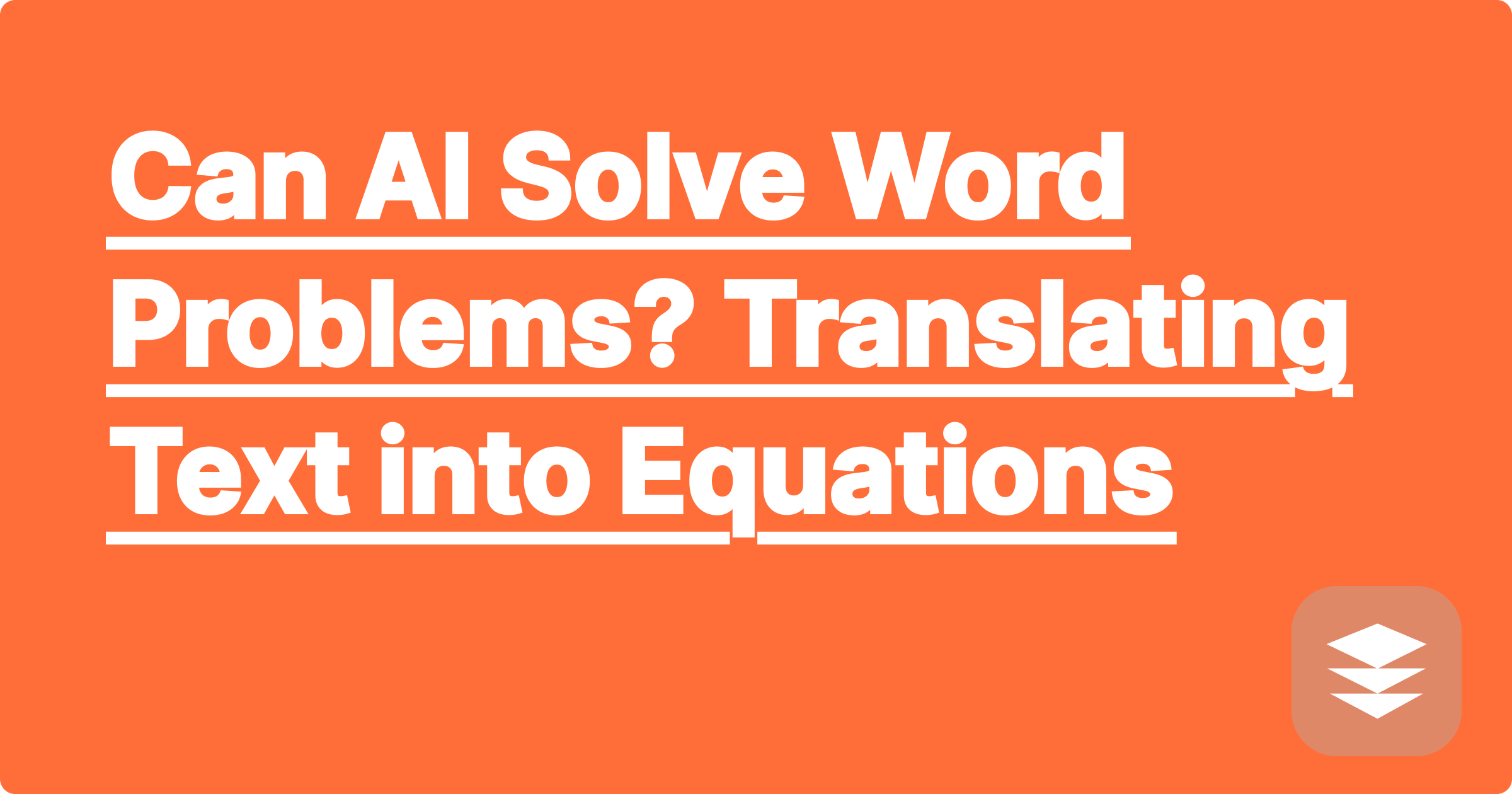
This is the classic scenario that gives students nightmares. You're faced with a full paragraph of text describing a real-world situation—trains leaving stations, water filling a tank, a projectile being launched—and you're expected to turn that story into a neat system of mathematical equations. This translation step, from English to math, is often the hardest part of any word problem.
The calculations might be simple, but setting up the problem correctly is a high-level skill. You can't just look for numbers and keywords; you need to understand the relationships, the constraints, and the question being asked.
So, can AI help with this? Absolutely. A powerful ai math word problem solver doesn't just calculate; it reasons. It acts as a text to equation converter, helping you bridge the gap between the story and the solution.
Word problems are challenging because they test multiple skills at once.
Many students get stuck on step 3.
Let's see how a tool like GPAI Solver would approach a classic physics word problem.
The Problem: "A ball is thrown straight up from the top of a 100-meter-tall building with an initial velocity of 30 m/s. How long will it take for the ball to hit the ground at the base of the building? Assume g = 9.8 m/s²."
GPAI Solver's Step-by-Step Deconstruction:
This ability to translate words into a structured mathematical setup is the most powerful feature of an ai math word problem solver. You can use it to check your own setup. Did you choose the right equation? Did you get the signs (+/-) correct for all your variables?
This immediate feedback is invaluable for learning the art of problem formulation.
This process works for all types of word problems across STEM.
The best way to get good at word problems is to practice. But it's not enough to just practice calculations; you have to practice the setup. By using an AI to help you translate text to equations, you can quickly see the patterns in how different types of stories are modeled mathematically. This builds the intuition you need to tackle any word problem that comes your way.
[Struggling to set up word problems? Try GPAI Solver today. Upload any word problem and get a step-by-step guide on how to translate it into solvable equations. Sign up now for 100 free credits.]
How to Use an AI Solver to Check for Unit Conversion Errors in Physics
Solving Systems of Linear Equations with an AI Matrix Calculator
A Step-by-Step Guide to Solving Limiting Reactant Problems with AI
Can AI Solve Word Problems? Translating Text into Equations
Verifying Your Work: Using an AI Solver as the Ultimate Answer Key
How the 'Humanizer' Can Rephrase Your Solution for Better Clarity
From a Photo of a Formula to a Full Solution: The Solver Workflow
How to Solve Recursive Problems with an AI Assistant
A Guide to Solving Equilibrium Problems in Statics and Chemistry
AI vs. Graphing Calculator: Why a Solver Offers More Insight